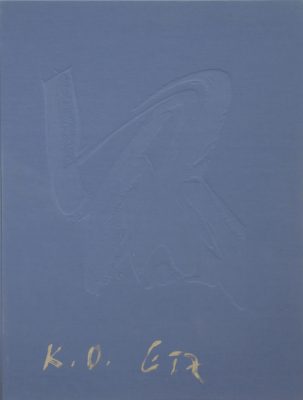Karl Otto Götz
about
Karl Otto Götz wurde am 22. Februar 1914 in Aachen geboren und gehört zu den prägendsten Vertretern des deutschen Informel nach dem Zweiten Weltkrieg. Er begann bereits in den 1930er-Jahren mit abstrakten Studien und entwickelte nach 1945 seine charakteristische Rakeltechnik: intensive, gestische Farbspuren, die er mit einem Rakel wieder auflöste und überarbeitete.
1952 gehörte er zu den Gründern der Frankfurter Gruppe „Quadriga“ – ein wichtiger Schritt zur Wiederbelebung der abstrakten Kunst in Deutschland. 1959 wurde Götz als einziger Deutscher Mitglied der C O B R A-Gruppe und nahm an der documenta II teil. Von 1959 bis 1979 lehrte er an der Kunstakademie Düsseldorf – zu seinen Schülern zählen Größen wie Gerhard Richter und Sigmar Polke.
Seine Arbeiten zeichnet eine kraftvolle Kombination aus Spontaneität und systematischer Bildstruktur aus. Bis ins hohe Alter malte er große, abstrakte Kompositionen, die Bewegung, Kontrast und Tiefe erforschen. Götz lebte ab 1975 in Niederbreitbach und verstarb am 19. August 2017 – 103 Jahre alt.
Karl Otto Götz was born in Aachen on 22 February 1914 and is one of the most influential representatives of German Art Informel after the Second World War. He began with abstract studies in the 1930s and developed his characteristic squeegee technique after 1945: intensive, gestural traces of colour, which he dissolved and reworked with a squeegee.
In 1952, he was one of the founders of the Frankfurt group ‘Quadriga’ – an important step towards the revitalisation of abstract art in Germany. In 1959, Götz was the only German to become a member of the C O B R A group and took part in documenta II. From 1959 to 1979, he taught at the Düsseldorf Art Academy – his students included such greats as Gerhard Richter and Sigmar Polke.
His works are characterised by a powerful combination of spontaneity and systematic pictorial structure. He continued to paint large, abstract compositions that explore movement, contrast and depth into old age. Götz lived in Niederbreitbach from 1975 and died on 19 August 2017 – aged 103.

